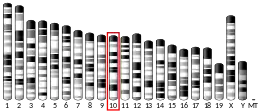| HBS1L | |||||||||||||||||||||||||||||||||||||||||||||||||||
|---|---|---|---|---|---|---|---|---|---|---|---|---|---|---|---|---|---|---|---|---|---|---|---|---|---|---|---|---|---|---|---|---|---|---|---|---|---|---|---|---|---|---|---|---|---|---|---|---|---|---|---|
| |||||||||||||||||||||||||||||||||||||||||||||||||||
| Identifiers | |||||||||||||||||||||||||||||||||||||||||||||||||||
| Aliases | HBS1L, EF-1a, ERFS, HBS1, HSPC276, eRF3c, HBS1 like translational GTPase | ||||||||||||||||||||||||||||||||||||||||||||||||||
| External IDs | OMIM: 612450 MGI: 1891704 HomoloGene: 68525 GeneCards: HBS1L | ||||||||||||||||||||||||||||||||||||||||||||||||||
| |||||||||||||||||||||||||||||||||||||||||||||||||||
| |||||||||||||||||||||||||||||||||||||||||||||||||||
| |||||||||||||||||||||||||||||||||||||||||||||||||||
| |||||||||||||||||||||||||||||||||||||||||||||||||||
| |||||||||||||||||||||||||||||||||||||||||||||||||||
| Wikidata | |||||||||||||||||||||||||||||||||||||||||||||||||||
| |||||||||||||||||||||||||||||||||||||||||||||||||||
HBS1 like translational GTPase is a protein that in humans is encoded by the HBS1L gene. [5]
Function
This gene encodes a member of the GTP-binding elongation factor family. It is expressed in multiple tissues with the highest expression in heart and skeletal muscle. The intergenic region of this gene and the MYB gene has been identified to be a quantitative trait locus (QTL) controlling fetal hemoglobin level, and this region influences erythrocyte, platelet, and monocyte counts as well as erythrocyte volume and hemoglobin content. DNA polymorphisms at this region associate with fetal hemoglobin levels and pain crises in sickle cell disease. A single nucleotide polymorphism in exon 1 of this gene is significantly associated with severity in beta-thalassemia/Hemoglobin E. Multiple alternatively spliced transcript variants encoding different protein isoforms have been found for this gene.
References
- 1 2 3 GRCh38: Ensembl release 89: ENSG00000112339 - Ensembl, May 2017
- 1 2 3 GRCm38: Ensembl release 89: ENSMUSG00000019977 - Ensembl, May 2017
- ↑ "Human PubMed Reference:". National Center for Biotechnology Information, U.S. National Library of Medicine.
- ↑ "Mouse PubMed Reference:". National Center for Biotechnology Information, U.S. National Library of Medicine.
- ↑ "Entrez Gene: HBS1 like translational GTPase". Retrieved 2017-09-22.
Further reading
- Thein SL, Menzel S, Peng X, Best S, Jiang J, Close J, Silver N, Gerovasilli A, Ping C, Yamaguchi M, Wahlberg K, Ulug P, Spector TD, Garner C, Matsuda F, Farrall M, Lathrop M (2007). "Intergenic variants of HBS1L-MYB are responsible for a major quantitative trait locus on chromosome 6q23 influencing fetal hemoglobin levels in adults". Proc. Natl. Acad. Sci. U.S.A. 104 (27): 11346–51. Bibcode:2007PNAS..10411346T. doi:10.1073/pnas.0611393104. PMC 2040901. PMID 17592125.
- Menzel S, Jiang J, Silver N, Gallagher J, Cunningham J, Surdulescu G, Lathrop M, Farrall M, Spector TD, Thein SL (2007). "The HBS1L-MYB intergenic region on chromosome 6q23.3 influences erythrocyte, platelet, and monocyte counts in humans". Blood. 110 (10): 3624–6. doi:10.1182/blood-2007-05-093419. PMID 17712044.
- Lettre G, Sankaran VG, Bezerra MA, Araújo AS, Uda M, Sanna S, Cao A, Schlessinger D, Costa FF, Hirschhorn JN, Orkin SH (2008). "DNA polymorphisms at the BCL11A, HBS1L-MYB, and beta-globin loci associate with fetal hemoglobin levels and pain crises in sickle cell disease". Proc. Natl. Acad. Sci. U.S.A. 105 (33): 11869–74. doi:10.1073/pnas.0804799105. PMC 2491485. PMID 18667698.
- Pandit RA, Svasti S, Sripichai O, Munkongdee T, Triwitayakorn K, Winichagoon P, Fucharoen S, Peerapittayamongkol C (2008). "Association of SNP in exon 1 of HBS1L with hemoglobin F level in beta0-thalassemia/hemoglobin E". Int. J. Hematol. 88 (4): 357–61. doi:10.1007/s12185-008-0167-3. PMID 18839276. S2CID 11140450.
- Pandit RA, Svasti S, Sripichai O, Munkongdee T, Triwitayakorn K, Winichagoon P, Fucharoen S, Peerapittayamongkol C (2008). "Association of SNP in exon 1 of HBS1L with hemoglobin F level in beta0-thalassemia/hemoglobin E". Int. J. Hematol. 88 (4): 357–61. doi:10.1007/s12185-008-0167-3. PMID 18839276. S2CID 11140450.
- Creary LE, Ulug P, Menzel S, McKenzie CA, Hanchard NA, Taylor V, Farrall M, Forrester TE, Thein SL (2009). "Genetic variation on chromosome 6 influences F cell levels in healthy individuals of African descent and HbF levels in sickle cell patients". PLOS ONE. 4 (1): e4218. Bibcode:2009PLoSO...4.4218C. doi:10.1371/journal.pone.0004218. PMC 2621086. PMID 19148297.
- Galanello R, Sanna S, Perseu L, Sollaino MC, Satta S, Lai ME, Barella S, Uda M, Usala G, Abecasis GR, Cao A (2009). "Amelioration of Sardinian beta0 thalassemia by genetic modifiers". Blood. 114 (18): 3935–7. doi:10.1182/blood-2009-04-217901. PMC 2925722. PMID 19696200.
- Ganesh SK, Zakai NA, van Rooij FJ, Soranzo N, Smith AV, Nalls MA, Chen MH, Kottgen A, Glazer NL, Dehghan A, Kuhnel B, Aspelund T, Yang Q, Tanaka T, Jaffe A, Bis JC, Verwoert GC, Teumer A, Fox CS, Guralnik JM, Ehret GB, Rice K, Felix JF, Rendon A, Eiriksdottir G, Levy D, Patel KV, Boerwinkle E, Rotter JI, Hofman A, Sambrook JG, Hernandez DG, Zheng G, Bandinelli S, Singleton AB, Coresh J, Lumley T, Uitterlinden AG, Vangils JM, Launer LJ, Cupples LA, Oostra BA, Zwaginga JJ, Ouwehand WH, Thein SL, Meisinger C, Deloukas P, Nauck M, Spector TD, Gieger C, Gudnason V, van Duijn CM, Psaty BM, Ferrucci L, Chakravarti A, Greinacher A, O'Donnell CJ, Witteman JC, Furth S, Cushman M, Harris TB, Lin JP (2009). "Multiple loci influence erythrocyte phenotypes in the CHARGE Consortium". Nat. Genet. 41 (11): 1191–8. doi:10.1038/ng.466. PMC 2778265. PMID 19862010.
- Nuinoon M, Makarasara W, Mushiroda T, Setianingsih I, Wahidiyat PA, Sripichai O, Kumasaka N, Takahashi A, Svasti S, Munkongdee T, Mahasirimongkol S, Peerapittayamongkol C, Viprakasit V, Kamatani N, Winichagoon P, Kubo M, Nakamura Y, Fucharoen S (2010). "A genome-wide association identified the common genetic variants influence disease severity in beta0-thalassemia/hemoglobin E". Hum. Genet. 127 (3): 303–14. doi:10.1007/s00439-009-0770-2. PMID 20183929. S2CID 24365475.
This article incorporates text from the United States National Library of Medicine, which is in the public domain.



